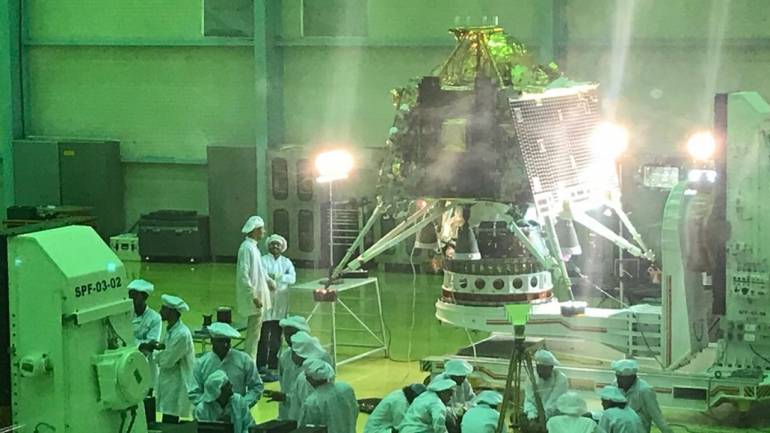ISRO is trying to establish contact with Chandrayaan 2's Vikram lander which. Here's a look at how the space agency is trying to reach the lander
The Indian Space Research Organisation (ISRO) has said “all possible efforts are being made to establish communication” with the Vikram lander.
India's bold bid to become only the fourth country to achieve a soft landing on the Moon had suffered a setback in the wee hours of September 7. ISRO had abruptly lost contact with Chandrayaan 2's landing module when Vikram was just 2.1 km above the lunar surface.
However, on September 8, ISRO chairman K Sivan said that Vikram had been located on the lunar surface and that it must had been a hard-landing.
A day later, reports quoting an unnamed ISRO official said that the hard-landing was “very close to the planned (touch-down) site as per the images sent by the on-board camera of the orbiter.”
“The lander is there as a single piece, not broken into pieces. It is in a tilted position," the official associated with the mission claimed.
Time running out for ISRO
ISRO scientists do not have enough time to connect with the lander. Vikram has been designed to conduct scientific experiments on the lunar surface for 14 Earth days (1 lunar day).
This effectively makes September 21 a deadline for establishing contact with Vikram.
Why will the lander survive only 14 days?
It takes 14 Earth days for one Moon day. After September 21, Moon will enter the lunar night. In the southern polar region, the temperature could fall to as low as -2000 degree Celsius during this period. The lander is not designed to withstand a temperature that low. During the lunar night period, instruments on board the lander could get damaged. So, even when the lunar 14-day long lunar night ends, the lander may not be operable.
How ISRO is trying to communicate with Vikram
Electromagnetic waves are used to communicate with remote objects such as the Vikram lander. Frequencies in the S-band (microwave) and L-band (radio waves) of the electromagnetic spectrum are generally used for communication across space.
According to a report by The Times of India, ISRO is using a 32-metre antenna at the deep space network centre in Byalalu near Bengaluru for this purpose.
Currently, it is not known as to why the communication was lost or if some of the communication devices on board were damaged in the hard-landing.
The lander was designed to communicate with the orbiter and ISRO’s ground station. The space agency is trying to send signals of specific frequencies which the lander’s instruments are programmed to receive.
Challenges
However, a report by The Indian Express points out that communication with Vikram could have been made more difficult by the fact the lander is tilted.
The lander is designed to stand erect, without any obstruction so that it can clearly receive and transmit signals over a wide area.
Because of the tilt, there is a possibility that the antenna could be buried or may have been obstructed. This would hamper its ability to its ability to receive signals.
While the orbiter is better placed to communicate with the lander, it is revolving around the Moon. As a result, it will only be able to attempt establishing contact when it passes over the lander’s location.
Vikram has its own battery system. However, the lander is designed to rely on power generated using solar panels. Because of its current position, it is unclear if the solar panel are able to generate power.Get access to India's fastest growing financial subscriptions service Moneycontrol Pro for as little as Rs 599 for first year. Use the code "GETPRO". Moneycontrol Pro offers you all the information you need for wealth creation including actionable investment ideas, independent research and insights & analysis For more information, check out the Moneycontrol website or mobile app.














